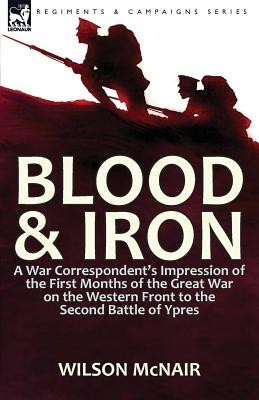
- We will send in 10–14 business days.
- Author: Wilson McNair
- Publisher: LEONAUR LTD
- Year: 2015
- Pages: 228
- ISBN-10: 1782824804
- ISBN-13: 9781782824800
- Format: 14 x 21.6 x 1.3 cm, softcover
- Language: English
- SAVE -10% with code: EXTRA
Reviews
Description
A well observed account of the opening campaigns of the Great War in Europe
There have been many books about warfare written by those who experienced war at first-hand. Until the middle years of the nineteenth century these authors were invariably amateurs, and primarily serving soldiers or diplomats. All that changed with the emergence of the 'special' or 'war correspondent' ever on 'the spot' whose 'copy' appeared in numerous newspapers and periodicals. These professional writers would describe what they had witnessed from the heart of the action in a graphic style which brought events to life with greater clarity than ever before. Many, naturally, retained the inevitable sensibilities and style of the newspaperman. Occasionally there was one who, like the author of this book, broke the mould, even though his talent as a writer has not earned him lasting recognition. Nevertheless, McNair so well describes the towns and villages of Flanders during wartime that the reader will walk their wet, dark streets with him. He lets us witness the march of weary men, the battlefield, the transport depot and the hospital. He explains the movements of armies and plans of generals in a way that any lay person can immediately grasp. This book is a thoughtful, erudite, well crafted and evocative view of the opening months of the Great War on the Western Front and is recommended.Leonaur editions are newly typeset and are not facsimiles; each title is available in softcover and hardback with dustjacket.
EXTRA 10 % discount with code: EXTRA
The promotion ends in 16d.02:03:59
The discount code is valid when purchasing from 10 €. Discounts do not stack.
- Author: Wilson McNair
- Publisher: LEONAUR LTD
- Year: 2015
- Pages: 228
- ISBN-10: 1782824804
- ISBN-13: 9781782824800
- Format: 14 x 21.6 x 1.3 cm, softcover
- Language: English English
A well observed account of the opening campaigns of the Great War in Europe
There have been many books about warfare written by those who experienced war at first-hand. Until the middle years of the nineteenth century these authors were invariably amateurs, and primarily serving soldiers or diplomats. All that changed with the emergence of the 'special' or 'war correspondent' ever on 'the spot' whose 'copy' appeared in numerous newspapers and periodicals. These professional writers would describe what they had witnessed from the heart of the action in a graphic style which brought events to life with greater clarity than ever before. Many, naturally, retained the inevitable sensibilities and style of the newspaperman. Occasionally there was one who, like the author of this book, broke the mould, even though his talent as a writer has not earned him lasting recognition. Nevertheless, McNair so well describes the towns and villages of Flanders during wartime that the reader will walk their wet, dark streets with him. He lets us witness the march of weary men, the battlefield, the transport depot and the hospital. He explains the movements of armies and plans of generals in a way that any lay person can immediately grasp. This book is a thoughtful, erudite, well crafted and evocative view of the opening months of the Great War on the Western Front and is recommended.Leonaur editions are newly typeset and are not facsimiles; each title is available in softcover and hardback with dustjacket.


Reviews